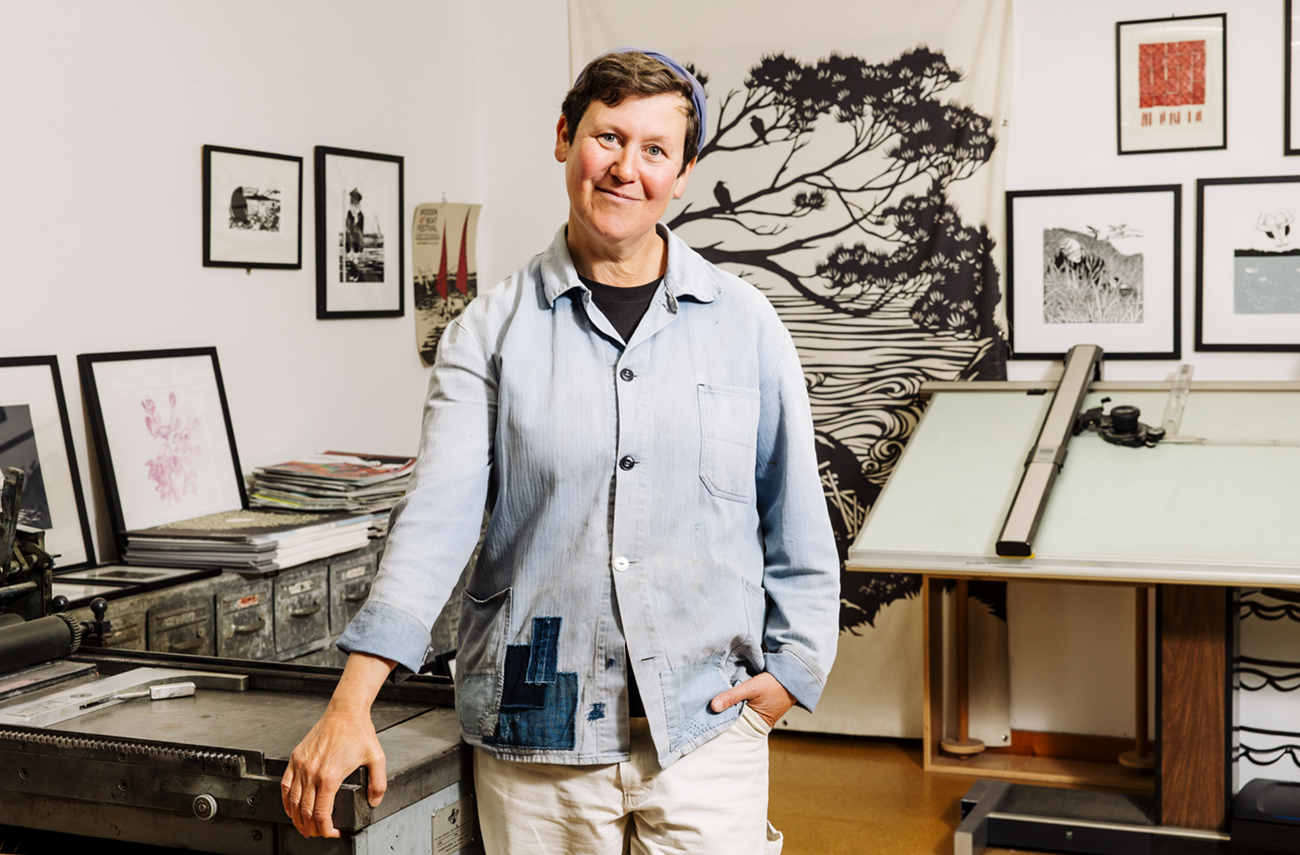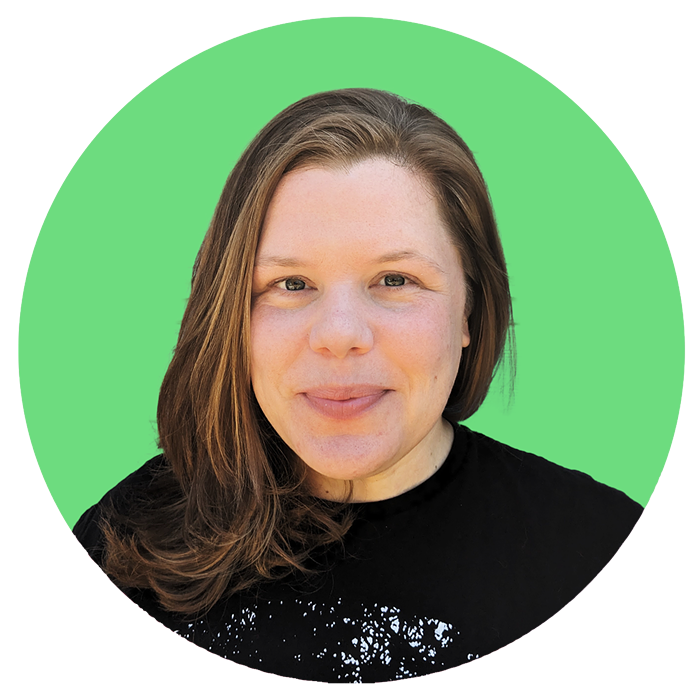How to Vote
Save the Country and Earn a Free Sticker While You’re at It
Flying the Freak Flag
Seattle’s Genre-Bending Beautiful Freaks Will Fight (and Bleed) for You
Swimming with Nikki McClure
Sometimes, When You Interview Your Favorite Artist, You End Up Becoming a Piece of Their Art
Octavia Butler Saw Our Doom
Parable of the Sower Is the Opposite of a Light Summer Read, but You Need to Read it This Summer Anyway
The Stranger’s Endorsements for the August, 6, 2024 Primary Election
Time to Make the Billionaires Pay What They Owe Us
Your Local Baseball Besties
Why You Should Give a Shit About the Mariners This Summer
Damn the Man, Save the Empire
Seattle’s Best Video Store Needs Our Help—Here are Eight Summer Classics to Rent Right Now
The Stranger's Summer Issue
Primary Endorsements! Cheat Sheat! Music Festival Faceoff! Chaos Ball! And More!
When the inquisitive seal popped his head out of the water about 30 feet away from us, I confirmed what I’ve suspected for years: Artist Nikki McClure sprinkles a little bit of magic everywhere she goes.
Working as a papercut artist since the mid-’90s, McClure has spent tens of thousands of hours slicing an X-ACTO knife through sheets of black paper to capture those unassuming yet energizing moments of day-to-day life in the Pacific Northwest. Roasting marshmallows over a campfire, berry-picking on a hot summer’s day, skinny-dipping under the moonlight, quilting, reading, cooking, protesting, resting—it’s all been memorialized by McClure.
Her originals have hung in galleries up and down the West Coast, and her designs have graced T-shirts, album covers, and show posters. You can spot her work on storm drain covers in Olympia, where she lives, and in the steel garage gate outside the University of Washington District Food Bank. She’s published several art books, sometimes collaborating with poets and writers such as award-winning children’s book author Cynthia Rylan, Portland rock royalty Sarah Dougher, and, most recently, the late famed environmentalist Rachel Carson.

My favorite project, though, and the one for which she’s likely most known, is her annual calendar. I’ve hung these calendars on my walls for more than a decade. I’ve meditated on their intricate details for years and relished the daily reminder to explore, to live, and to breathe in each moment McClure has delicately carved into the page.
I’m gushing. But she’s worthy. McClure is the kind of person who will, say, wrap up an interview at her home on a breezy July day by suggesting a spontaneous dip in the sea. It was there, in that post-interview moment, that it clicked. We became a frame of her artwork. The water circling out from our bodies, the sunlight dancing across the surface of the sea, the seal coming over to say hello.
You can feel the magic yourself this summer at her career-spanning solo exhibit at the Bainbridge Island Museum of Art. The show, Something About the Sky & Other Wonderings, includes pieces ranging from her very first art show in 1996 to her latest book, Something About the Sky. And, in true McClure style, she’s made a little room for visitors to soak in their own creativity.
“[The museum has] a tiny patio on the second floor that I got some lawn chairs for, for a collective cloud viewing,” she said before we jumped into the water. “People are encouraged to go and lie down on the lawn chair, hopefully next to a stranger, and just talk about the clouds together. Because my favorite thing at a fair is the bumper cars. For three minutes, you have this wild abandon, and you get to have eye contact with strangers and laugh with strangers.”
Here’s what else we talked about before we went for our impromptu swim, from how she discovered her love for paper-cutting (it was on a whim!) to what she likes to do when not making art (unsurprisingly, swimming is high on the list).

When did you discover paper-cutting? Did it click immediately, like “This is my medium, this is what I’m doing”?
I had done scissor-cutting and folded cuts, kind of valentiney things, but one day—it was in September because I’d gone picking apples—I came home, and I sat down, and I was like “You know, I really want to make a book. I want to make a book right now. How am I gonna do it?” Luckily, I had a boyfriend who actually went to art school, he went to Cooper Union, and he’s like “Why don’t you try cutting out of paper?” And so I did, and it was great.
Have you dabbled in anything since? Or were you just all in with paper-cutting?
I like watercolor painting, but I’m terribly impatient. So I watercolor when I’m on vacation, but now I don’t really have vacations.
You just said you’re impatient, but you also will cut literally thousands of tiny slivers of paper…
[Laughs] Right, but I don’t have to wait for anything to dry. I have done printmaking, but I was very messy—I’d forget there are wet areas and non-wet areas, so at least it’s dry. And once I cut and remove it, I can see it. Printing is in reverse, or you have to print it to see it. And watercolors layer, you’re building something. This is just immediate removal and instant satisfaction.
Yeah, with so many mediums you build, you add things. Here you are doing the opposite of that. And in some cases, it’s very intricate. Some of these pieces, it sounds like, can take weeks. If you’re in the middle of a piece and you make one wrong slice… Do mistakes exist in this world?
That’s with any art—mistakes are part of it. Mistakes are the part that I actually—I don’t start out hoping to make a mistake, but when one is made, it sometimes can be a really great thing. Because it’s messed up, and then you’re free to try everything you’re scared of. Usually, I do the thing that scares me the most first, or the thing that’s going to be the hardest first. Say, someone’s face, especially if it has to be a particular person. I’m not a portraitist. So I tend to do that first, so if a mistake is made, it’s done early, and then I can experiment. But I usually just go with it and take what I’ve dealt myself. [Laughs]
Also, thinking of an image and coming up with an idea, you know, some of them aren’t the greatest idea, but [they are] the process to get to the thing, that resounding, glowing, perfect, magic, dream art moment that every artist, I think, wants to have. But you can’t have it all the time. It’s always remarkable to me when I hear somebody likes the picture I hated the most from the calendar, say. I try not to really hate them, but there’s one that’s like “Eh, it’s a little off.” But to somebody, that’s a 10 to them. In some ways, you’re not making for yourself; you’re making for this other unknown that isn’t expressed yet or connected yet. When you’re making, removing the critic leaves you open to those possibilities that your brain was maybe going to close off.
I love that. With the calendars, one of the things that I find so fascinating about them is that people will do different things with them when the year’s over. They’ll cut them up and use them as postcards, they’ll frame individual pages, they’ll make collages. They’re these finite pieces of art that people then repurpose to have more life. Do you have a favorite way that people have used them? Is that what you expected when you first made them?
Well, I never thought I’d still be doing this. [Laughs] I made one in 1998. In 1999, I did not make one, and everybody said, “Where’s your calendar?” Well, the next year was 2000, so that’s, like, you have to make a calendar. That did so well, I was like “Well, I guess people want a calendar every year.” Within it, though, was a really good making exercise, an assignment. But what people have made from them, I mean, it runs the gamut from beautiful jam jar lids to there’s one person who hangs them up, has a whole wall of every calendar, and changes the month every year.
Calendars have a certain lifespan of a year, and come around May, people stop buying them for that current year. I self-publish it, I never know how many to print. Sometimes there’s more, sometimes there’s not enough, and if there’s more, I take it back to the printer, and they make stacks, and they cut it into fourths, and make these notepads. They make great grocery lists or the note for when you didn’t really want to spend $5 for a card. The printer just cuts them into fourths, so to look at the art in these new croppings that I hadn’t expected is really exciting. It’s great when people reuse them. Someone else, she made these little envelopes, and they hold different sizes of circular knitting needles.
That’s cute! I don’t knit, but…
I don’t either. [Laughs] I knit squares. I can knit a square. What else do I do? I like to make flags, and I like to cook, and I love berry-picking and I love swimming… these are all creative things to me.
And they’re all a part of your art. In all of your calendars, in all of your books, there are people swimming, there are people picking, there are people running…
Yeah, it’s all part of it.
Obviously, images are a big part of your art, but you also use words. Very sparingly, but in a way that I feel like… I would call you a writer. Would you call yourself a writer? How does writing play into your creative process?
Yeah. Thank you. It sort of happens concurrently with when I’m making the art, once I’ve decided the image, and as I’m sketching it out, words are starting to pop in my brain. I keep this list of words that are forming. As I’m making the final art, I’ll just be listening to, like—I listen to Democracy Now! sometimes and a word will pop up. “Oh, Amy [Goodman], good word, you’re so right about that!” You know, sort of… zeitgeist. People are thinking about this word; this word just feels right. But the thing that I’m doing, too, is looking forward in time. I’m working in, say, March 2024 for an image that won’t be until December of 2025. So sometimes I just go open up the dictionary and see what words are there, too. Because sometimes the thing that I’m needing has to be done with some magic incantation.
What’s the longest you’ve spent on a piece?
I don’t really… I don’t keep an hour log because maybe I would be appalled by how little I work. [Laughs] So the longest I know that I’ve worked on one piece, it was a map that I made for What Will These Hands Make, and it’s this map of this community. It took a whole month just to cut it, and took extra time to plan because it was almost like making a movie set. I had to know what was around the corner and down the street. Ideally, I start a picture on Monday, and I end it on Friday. Because once I take a break of a weekend… it’s a physical thing I’m doing, so I try to think of myself as an athlete, you know, because with neck strain and arm strain and eye strain, once I take a break and come back to something, lines change, thickness and decisions of things change, values change.
I never considered that, how after a weekend you might have a slightly different eye. Because you’re kind of a different person! You’re a new Nikki on Monday compared to who you were on Friday.
You are! Even what you’re cutting out—I showed you that picture of the cherry blossoms, and that one took maybe three weeks to finish. Meanwhile, [the cherry blossoms] are completely gone. That was just a moment in time. Your models just have disintegrated. Change is happening, and you’re changing, so to make something that’s so static, you really gotta work fast.
See Nikki McClure: Something About the Sky & Other Wonderings at Bainbridge Island Museum of Art, 550 Winslow Way E, Bainbridge Island, WA, through September 29.




















